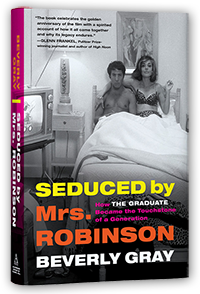Far be it from me to say anything bad about Japan. Years ago, I was a Junior Year Abroad student in Tokyo, and I was one of fifty-six Japanese-speaking guides who staffed the U.S. Pavilion at Osaka’s Expo 70. During that period, and on more recent visits, I have enjoyed the hospitality of many wonderful people. I feel deeply for them now. What’s going on in Japan at the moment—earthquake, tidal wave, nuclear meltdown—is nothing short of tragic.
Still, a perverse part of me can’t help making the Roger Corman connection. Chris Koetting’s Mind Warp!, a helpful new history of Corman’s New World Pictures, has reminded me of the gory details. Back in 1973 Sakyo Komatsu published Nippon Chinbotsu, which translates as “Japan Sinks.” Komatsu’s novel posited a series of killer earthquakes and volcanoes that end with the submerging of the Japanese island chain. The book was hugely popular among Japanese readers, and the film version turned out to be a blockbuster, raking in $7 million at the Japanese box office. It also made a splash at the 1974 Cannes Film Festival, which is where Roger Corman came into the picture.
Having bought the North American distribution rights, Corman chopped the film from 143 minutes to a brisk 82. He also had his minions shoot new footage featuring actor Lorne Greene (fresh from playing Pa Cartwright on Bonanza) as a UN ambassador, so that the revamped Nippon Chinbotsu could boast an American star. The final touch was a new title. Roger’s market research in those days involved sending young staffers to a local high school at lunch time. Their job was to dodge administrators while quizzing students on which of several titles would draw them into a theater. Experienced Cormanites quickly realized they needn’t bother taking a poll: it was easy enough to make up desirable results. As Allan Arkush (later to win an Emmy for directing TV’s The Temptations) put it to me, “Are you going to go see Tidal Wave or Submersion of Japan? It’s not a contest.”
That’s how the Corman film Tidal Wave was born. Its special effects were notoriously bad, and scenes of devastation were obvious faked. But in later years Roger—who loves “ripped from the headlines” stories—was fond of sending crews to actual disaster areas. While I was at Concorde-New Horizons, the Loma Prieta earthquake shook Northern California, and Roger quickly dispatched a camera team to film the ruined freeway and other rubble. Then the trick was to write a movie that could exploit the publicity value of the footage. We ended up with a woman-in-distress thriller called Quake. I suspect even now Roger is pondering how to get a crew to Northern Japan, so that he can announce he’s making Tsunami.
Subscribe to:
Post Comments (Atom)








Another amazing story Beverly! SUBMERSION OF JAPAN was recently remade in 2006(?) if I'm not mistaken. Speaking of Japan disaster movies, Toho's THE LAST WAR from 1961 was a pretty harrowing movie about what would happen should WW3 break out.
ReplyDeleteYes, Japanese filmmakers have always been keen on disaster movies. With their history from World War II onward, I guess that makes sense. By the way, last summer I was lucky to tour the working parts of Kyoto's Toei Studios, where lots of samurai and Power Rangers films are shot.
ReplyDeleteThat's wonderful! I would love to visit Toei. I have a fair amount of their productions on DVD as well as a number of their chambara programs starring the immortal Sonny Chiba to name one. Toei churned out some Corman worthy exploitation flicks, too!
ReplyDeleteAnd you speak Japanese, too? I was learning Mandarin Chinese at one point and can understand more than I can speak right now. I would love to learn Japanese. It's not as difficult to learn as some other languages, is that right?
Ah, the difficulty of learning Japanese. In some ways it's fairly simple: pronunciation is straightforward, and there are few of those pesky cases and conjugations to memorize. Then again, the word order is completely different from what we're used to, and it's really important to understand levels of politeness. Add to that the complexity of the written language -- because of the writing system, you can't reinforce what you know by (let's say) picking up a newspaper and scanning the headlines. So let's say it's easy to speak on a primitive level, and brutally hard to learn well. I feel I'm somewhere in between, but at Toei I did spend a very full hour speaking in Japanese about the movie industry with a chatty production guy. Afterwards, I was exhausted. At one time, I could also tell you in Japanese all about the U.S. space program, but that's another story.
ReplyDeleteI love this kind of stuff - disaster movies are coming out seemingly every twenty minutes from 1970 (Airport) until 1980 (appropriately - When Time Ran Out) and the King of Pop Cinema gets one onscreen in his inimitable fashion - fantastic!
ReplyDeleteThanks, Craig. I love the fact that you're going back to my early posts, which allows me to relive them too!
ReplyDelete